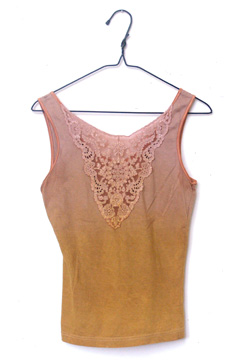 story by Missy SteinbergWhen Kelli Caldwell heard members of local design and dye house BlueRedYellow speak last summer about the dangers of synthetic dyes, she decided to take action. “It’s all about being aware that your clothing can be just as toxic as the air you breathe,” says Caldwell, a project manager for the National Association of Sustainable Fashion Designers (SFD).
story by Missy SteinbergWhen Kelli Caldwell heard members of local design and dye house BlueRedYellow speak last summer about the dangers of synthetic dyes, she decided to take action. “It’s all about being aware that your clothing can be just as toxic as the air you breathe,” says Caldwell, a project manager for the National Association of Sustainable Fashion Designers (SFD).Dyes once commonly used in the American textile industry, such as Benzidine-based dyes, have been found to be carcinogenic, and manufacturers are common offenders in polluting waterways with dye wastewater. But plants like Japanese indigo, madder and marigold can make vibrant natural dyes that pose little risk to the environment or to people wearing the clothes.
With support from SFD, Caldwell began organizing the cleanup of a vacant lot in the Mantua neighborhood of West Philadelphia for a community dye garden. Soon, the Pennsylvania Horticultural Society, Occupy Vacant Lots, environmental science students from University of Pennsylvania and enthusiastic neighbors joined the project Caldwell called Dyed Green Tomatoes.
Since then, Caldwell has held garden clean-up days and hopes to have plots planted by late May. In addition to other organizations, West Philadelphia Community Center has contributed significantly, holding children’s workshops to paint rain barrels for the garden and purchasing plots to use in a natural dye class held with BlueRedYellow in the fall. “My contribution [to the environmental movement] is introducing a community to a more environmentally friendly way of wearing clothes,” says Caldwell. “It’s all about getting the knowledge.”
Anyone interested in growing natural dyes can purchase a plot for a small price. For more information on Dyed Green Tomatoes, visit philly.changeby.us, and click on “join a project.”



